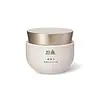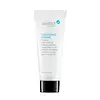What's inside
What's inside
 Key Ingredients
Key Ingredients

 Benefits
Benefits

 Concerns
Concerns

 Ingredients Side-by-side
Ingredients Side-by-side

Water
Skin ConditioningCetyl Ethylhexanoate
EmollientIsopropyl Palmitate
EmollientButylene Glycol
HumectantDipropylene Glycol
HumectantCetearyl Alcohol
EmollientPolysorbate 60
EmulsifyingGlyceryl Stearate
Emollient1,2-Hexanediol
Skin ConditioningSorbitan Stearate
EmulsifyingParfum
MaskingStearic Acid
CleansingPalmitic Acid
EmollientGlycerin
HumectantCarbomer
Emulsion StabilisingPEG-100 Stearate
Tromethamine
BufferingGlyceryl Caprylate
EmollientLinalool
PerfumingDisodium EDTA
Niacinamide
SmoothingTranexamic Acid
AstringentMyristic Acid
CleansingArachidic Acid
CleansingTremella Fuciformis Extract
HumectantEthylhexylglycerin
Skin ConditioningWater, Cetyl Ethylhexanoate, Isopropyl Palmitate, Butylene Glycol, Dipropylene Glycol, Cetearyl Alcohol, Polysorbate 60, Glyceryl Stearate, 1,2-Hexanediol, Sorbitan Stearate, Parfum, Stearic Acid, Palmitic Acid, Glycerin, Carbomer, PEG-100 Stearate, Tromethamine, Glyceryl Caprylate, Linalool, Disodium EDTA, Niacinamide, Tranexamic Acid, Myristic Acid, Arachidic Acid, Tremella Fuciformis Extract, Ethylhexylglycerin
Water
Skin ConditioningParaffinum Liquidum
EmollientCetyl Ethylhexanoate
Emollient1,2-Hexanediol
Skin ConditioningCetyl Alcohol
EmollientPolysorbate 60
EmulsifyingDimethicone
EmollientSorbitan Sesquioleate
EmulsifyingGlyceryl Stearate
EmollientPEG-100 Stearate
Butylene Glycol
HumectantCaprylyl Glycol
EmollientCarbomer
Emulsion StabilisingSodium Stearoyl Glutamate
CleansingTriethanolamine
BufferingCitrus Limon Peel Oil
MaskingLactobacillus
Skin ConditioningLactobacillus/Punica Granatum Fruit Ferment Extract
Skin ConditioningEthylhexylglycerin
Skin ConditioningDisodium EDTA
Glycerin
HumectantApium Graveolens Root Extract
Skin ConditioningBrassica Oleracea Capitata Leaf Extract
Skin ConditioningBrassica Oleracea Italica Extract
AstringentBrassica Rapa Leaf Extract
Skin ConditioningDaucus Carota Sativa Root Extract
Skin ConditioningOryza Sativa Extract
AbsorbentSolanum Lycopersicum Fruit Extract
AntioxidantPentylene Glycol
Skin ConditioningLecithin
EmollientSodium Phosphate
BufferingPEG-40 Hydrogenated Castor Oil
EmulsifyingPPG-26-Buteth-26
Skin ConditioningPalmitoyl Tripeptide-1
Skin ConditioningCopper Tripeptide-1
Skin ConditioningSh-Oligopeptide-1
Skin ConditioningPhenoxyethanol
PreservativeWater, Paraffinum Liquidum, Cetyl Ethylhexanoate, 1,2-Hexanediol, Cetyl Alcohol, Polysorbate 60, Dimethicone, Sorbitan Sesquioleate, Glyceryl Stearate, PEG-100 Stearate, Butylene Glycol, Caprylyl Glycol, Carbomer, Sodium Stearoyl Glutamate, Triethanolamine, Citrus Limon Peel Oil, Lactobacillus, Lactobacillus/Punica Granatum Fruit Ferment Extract, Ethylhexylglycerin, Disodium EDTA, Glycerin, Apium Graveolens Root Extract, Brassica Oleracea Capitata Leaf Extract, Brassica Oleracea Italica Extract, Brassica Rapa Leaf Extract, Daucus Carota Sativa Root Extract, Oryza Sativa Extract, Solanum Lycopersicum Fruit Extract, Pentylene Glycol, Lecithin, Sodium Phosphate, PEG-40 Hydrogenated Castor Oil, PPG-26-Buteth-26, Palmitoyl Tripeptide-1, Copper Tripeptide-1, Sh-Oligopeptide-1, Phenoxyethanol
Ingredients Explained
These ingredients are found in both products.
Ingredients higher up in an ingredient list are typically present in a larger amount.
1,2-Hexanediol is a synthetic liquid and another multi-functional powerhouse.
It is a:
- Humectant, drawing moisture into the skin
- Emollient, helping to soften skin
- Solvent, dispersing and stabilizing formulas
- Preservative booster, enhancing the antimicrobial activity of other preservatives
Butylene Glycol (or BG) is used within cosmetic products for a few different reasons:
Overall, Butylene Glycol is a safe and well-rounded ingredient that works well with other ingredients.
Though this ingredient works well with most skin types, some people with sensitive skin may experience a reaction such as allergic rashes, closed comedones, or itchiness.
Learn more about Butylene GlycolCarbomer is a polymer of acrylic acid. Its main role is to create a gel consistency.
A high amount of carbomer can cause pilling or balling up of products. Don't worry, most products contain 1% or less of carbomer.
Cetyl Ethylhexanoate is an emollient ester. It comes from cetearyl alcohol and 2-ethylhexanoic acid.
Cetyl Ethylhexanoate is an emollient that adds a velvety feel to skin without being greasy or oily. Emollients help trap moisture into your skin, keeping your skin soft and hydrated.
Disodium EDTA plays a role in making products more stable by aiding other preservatives.
It is a chelating agent, meaning it neutralizes metal ions that may be found in a product.
Disodium EDTA is a salt of edetic acid and is found to be safe in cosmetic ingredients.
Learn more about Disodium EDTAEthylhexylglycerin (we can't pronounce this either) is commonly used as a preservative and skin softener. It is derived from glyceryl.
You might see Ethylhexylglycerin often paired with other preservatives such as phenoxyethanol. Ethylhexylglycerin has been found to increase the effectiveness of these other preservatives.
Glycerin is already naturally found in your skin. It helps moisturize and protect your skin.
A study from 2016 found glycerin to be more effective as a humectant than AHAs and hyaluronic acid.
As a humectant, it helps the skin stay hydrated by pulling moisture to your skin. The low molecular weight of glycerin allows it to pull moisture into the deeper layers of your skin.
Hydrated skin improves your skin barrier; Your skin barrier helps protect against irritants and bacteria.
Glycerin has also been found to have antimicrobial and antiviral properties. Due to these properties, glycerin is often used in wound and burn treatments.
In cosmetics, glycerin is usually derived from plants such as soybean or palm. However, it can also be sourced from animals, such as tallow or animal fat.
This ingredient is organic, colorless, odorless, and non-toxic.
Glycerin is the name for this ingredient in American English. British English uses Glycerol/Glycerine.
Learn more about GlycerinGlyceryl Stearate is a mix of glycerin and stearic acid.
It is used to stabilize the mixing of water and oil ingredients. By preventing these ingredients from separating, it can help elongate shelf life. It can also help thicken the product's texture.
As an emollient, it helps soften skin and supports barrier-replenishing ingredients.
In cosmetics, Glyceryl Stearate is often made from vegetable oils or synthetically produced.
This ingredient may not be fungal-acne safe
Fun fact: The human body also creates Glyceryl Stearate naturally.
Learn more about Glyceryl StearatePeg-100 Stearate is an emollient and emulsifier. As an emollient, it helps keep skin soft by trapping moisture in. On the other hand, emulsifiers help prevent oil and water from separating in a product.
PEGS are a hydrophilic polyether compound . There are 100 ethylene oxide monomers in Peg-100 Stearate. Peg-100 Stearate is polyethylene glycol ester of stearic acid.
Polysorbate 60 is used to help stabilize products. It is a surfactant and emulsifier. These properties help keep ingredients together in a product. Surfactants help reduce surface tension between ingredients with different states, such as liquids and solids. Emulsifiers help prevent oils and waters from separating.
Polysorbate 60 is sorbitol-based and created from the ethoxylation of sorbitan. Ethoxylation is a chemical reaction used to add ethylene oxide. Sorbitan is a the dehydrated version of sorbitol, a sugar found in fruits.
In this case, the 60 comes from reacting 60 units of ethylene oxide with sorbitan.
Polysorbates are commonly used in medicine and foods.
Learn more about Polysorbate 60Water. It's the most common cosmetic ingredient of all. You'll usually see it at the top of ingredient lists, meaning that it makes up the largest part of the product.
So why is it so popular? Water most often acts as a solvent - this means that it helps dissolve other ingredients into the formulation.
You'll also recognize water as that liquid we all need to stay alive. If you see this, drink a glass of water. Stay hydrated!
Learn more about Water